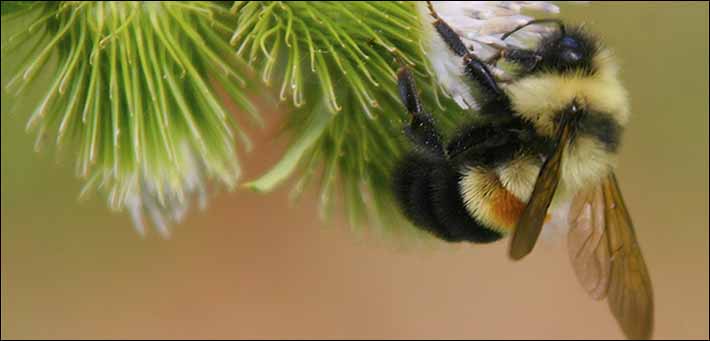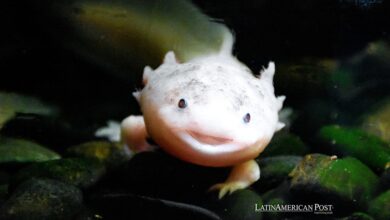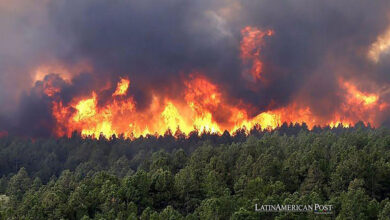First bumble bee species to be listed as endangered


The rusty patched bumble bee Bombus afinis has been listed as endangered by the US Fish and Wildlife Service (FWS), making it the first wild bee in the continental Unites States to gain federal protection.
Since the 1990’s its population has plunged nearly 90%, according to the FWS. The agency determined they are in danger of extinction due to a mix of factors including disease, pesticides, climate change and habitat loss.
Government scientists say pesticides called neonicotinoids, which are widely used on crops, gardens and forests, are especially harmful for the bees as they are absorbed by the plant’s entire system, including its nectar and pollen.
They might be especially vulnerable to pesticides applied early in the year because for a month their whole colony depends on the success of a solitary queen that emerges from winter dormancy, added the agency.
This bumble bee is seen as a key pollinator of blueberries, tomatoes and wildflowers and once flourished across 28 states and in the Canadian provinces of Ontario and Quebec. Today, the FWS says small populations remain in 13 states and Ontario. They are named for the conspicuous reddish blotch on their abdomen.
In September, seven species of the Hawaiian yellow-faced bees had been added to the endangered list as well, but the bumble bee is the first one to be listed in the lower 48 states.
“Native pollinators in the US provide essential pollination services to agriculture which are valued at more than US $9 billion annually,” Eric Lee-Mäder, program director at the Xerces Society, the non-profit organization that petitioned the US government to label the bees as endangered told CNN at the time.
As for the bumble bees their pollinator services are valued at an estimated $3 billion each year. They are essential pollinators of wildflowers and about one third of all US crops.
The FWS recommends people to plant a mix of flowering trees, shrubs and herbaceous plants to help the rusty patched bumble bee through their active season (April-October). They also recommend not to mow and rake so that the bumble bees and many other pollinators such as bees, moths and butterflies can have a safe place to build their nests.
More so, listing under the Endangered Species Act generally restricts activities known to harm the species in question and requires the government to prepare a recovery plan. It also raises awareness and helps conservation planning for the species.
LatinAmerican Post | Maria Andrea Marquez




